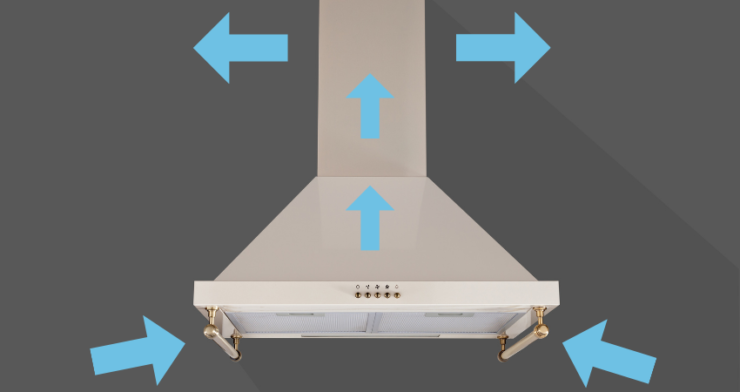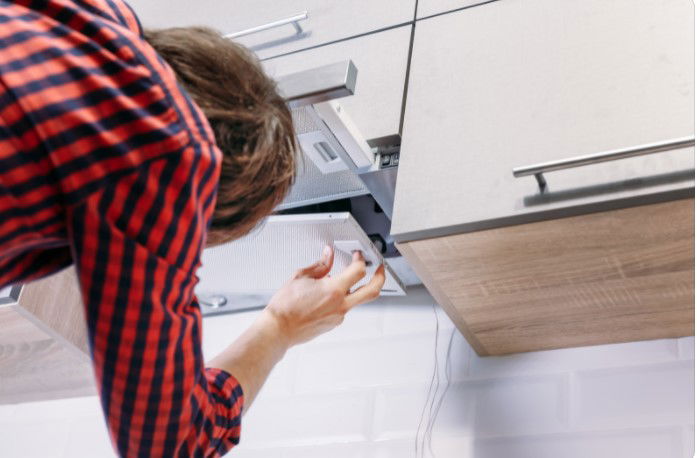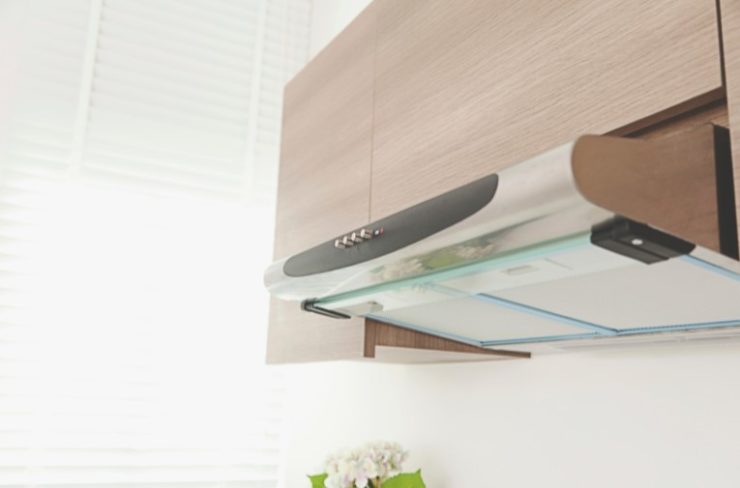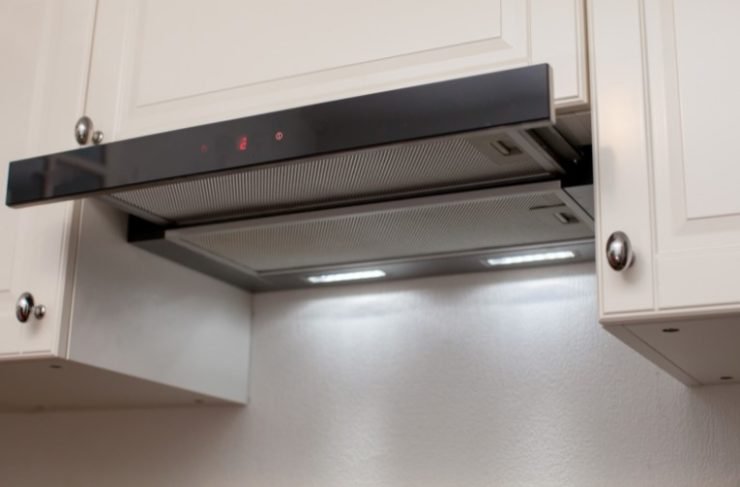After working in professional kitchens for over a decade, I know the importance of a good ventilation system. And while a ductless range hood may not be able to handle the heat and smoke of a restaurant kitchen, it can be an excellent option for a lot of home cooks.
For small spaces and casual cooks, a ductless range hood might be all you need. Plus they have the bonus of being relatively inexpensive and easy to install.
So, after hours of research and years of experience, I’ll be breaking down how ductless range hoods work and what scenarios they’re best for. By the end, you’ll know if going ductless is the right choice for your kitchen.
In This Article
How Ductless Range Hoods Work

Ductless range hoods are fairly simple machines. They use a fan and a filter to keep the air in your kitchen clean and smoke-free.
The fan creates suction to pull up grease, smoke, steam, and odors while you cook. That contaminated air is forced through a filter (or two), which essentially cleans the air before it’s blown back into the kitchen.
Ductless hoods always use disposable carbon or charcoal filters. As air passes through these filters, grease is trapped and odors and smoke are neutralized.
Some models will also have mesh or baffle filters that act as the first line of defense. These trap grease before it can get to the carbon filter and are washable and reusable.
Going for an option that has mesh or baffle filters can extend the life of the charcoal filters so you don’t have to replace them as often. Not to mention, they make for a more high-end look.
Ductless vs. Ducted vs. Convertible Range Hoods
While ductless hoods clean air and recirculate it back into your home, ducted models remove air from the kitchen and send it outside.
As the name implies, ducted hoods are connected to a duct system that vents to the outside of the building. Because ducted hoods are actually removing air and not cleaning it, they are much more efficient and effective.
They can remove smoke, steam, and odor-filled air more effectively than a carbon filter can clean it. Ducted hoods will either have mesh or baffle filters but no disposable carbon filter, which adds to the increased airflow and performance.
You may also come across options that are called “convertible”. This simply means that they can be used ducted or ductless. This is a good option if you don’t have ductwork in place, but might plan on upgrading your kitchen in the future.
How To Tell If A Ductless Range Hood Is Right For You

Ductless range hoods certainly have their limitations. But, they can also be an excellent and inexpensive solution for a lot of situations.
The biggest challenge to getting a ducted range hood is if there’s no ductwork already in place. Installing a duct from scratch can be an incredibly expensive and labor-intensive job. And if you live in a condo or apartment complex, it might be out of the question altogether.
Ductless range hoods on the other hand can be installed anywhere, and quite easily.
A ductless range hood might also be a good fit if you don’t cook very often and aren’t known for producing billowing clouds of smoke when you do cook.
It can also be a solid option for those with a very small kitchen, or if you’re working with an undersized cooktop or just a couple of portable induction hobs.
On the other hand, if you do any indoor grilling, deep-frying, or high heat wok cooking, a ductless range hood is going to be somewhat lacking.
Things To Know If You Have A Ductless Range Hood
Using a ductless range hood is no different than using a ducted one. The big difference is that you’ll need to remember to replace the carbon filters periodically. So while the hoods and installation are often less expensive, there is an ongoing cost for the life of the hood.
How often they need to be replaced will depend on how frequently you cook and also what kind of cooking you’re doing. Especially greasy food can clog filters and drastically shorten their lifespan. But if you have a model with a baffle filter you may be able to go longer between replacements.
It’s also important to note that ductless hoods are limited in the amount of smoke, fumes, and other particulates that they can remove from the air.
Carbon filters do a good job removing smells and trapping grease, but some airborne toxins can pass through and back into the air that you breathe.
Things like carbon monoxide from a gas stove, chemicals from cleaners, toxins from burnt oil, and water vapor from steam are some examples of things that may not be removed from the air with a ductless range hood.
Are They Worth It?

Is it worth using a ductless range hood? The short answer is yes. While they may not be as effective as a ducted model, ductless hoods still offer a lot of benefits. And they are always a better option than no hood at all.
The fact that ductless hoods are relatively inexpensive, compatible in any kitchen setup, and easy to install, makes them a great option for a lot of home cooks.
If you do a LOT of cooking and enjoy cranking the heat on your range, you’d probably be better off installing ductwork. But I know that’s not always possible, and it’s darn expensive. So maybe consider a convertible model to keep your options open for the future.
To get you started on the right foot, here are our top picks for the best ductless range hoods around.
Frequently Asked Questions
What’s The Difference Between A Ductless And A Recirculating Hood?
Ductless and recirculating range hoods are the same thing. Those are simply two different names for a hood that filters air and blows it back into the kitchen.
Do Ductless Range Hoods Work?
Yes, ductless range hoods can be an effective kitchen ventilation option. They utilize carbon filters to trap grease and clean air before it is recirculated back into the room.
How Do I Know If My Range Hood Is Ductless?
Ductless hoods are self-contained and are not connected to any type of vent or duct that leads outside. Look above your hood to see if it is connected to a metal duct. If it’s not connected to anything then it’s a ductless system.







